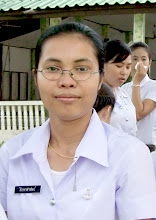Stephen
Krashen and Tracy Terrell developed the Natural Approach in the early
eighties (Krashen and Terrell, 1983), based on Krashen's theories about
second language acquisition. The approach shared a lot in common with
Asher's Total Physical Response method in terms of advocating the need
for a silent phase, waiting for spoken production to "emerge" of its
own accord, and emphasizing the need to make learners as relaxed as
possible during the learning process. Some important underlying
principles are that there should be a lot of language "acquisition" as
opposed to language "processing", and there needs to be a considerable
amount of comprehensible input from the teacher. Meaning is considered as the essence of language and vocabulary (not grammar) is the heart of language.
As
part of the Natural Approach, students listen to the teacher using the
target language communicatively from the very beginning. It has
certain similarities with the much earlier Direct Method, with the
important exception that students are allowed to use their native
language alongside the target language as part of the language learning
process. In early stages, students are not corrected during oral
production, as the teacher is focusing on meaning rather than form
(unless the error is so drastic that it actually hinders meaning).
Communicative
activities prevail throughout a language course employing the Natural
Approach, focusing on a wide range of activities including games,
roleplays, dialogs, group work and discussions. There are three
generic stages identified in the approach: (1) Preproduction -
developing listening skills; (2) Early Production - students struggle
with the language and make many errors which are corrected based on
content and not structure; (3) Extending Production - promoting fluency
through a variety of more challenging activities.

ไม่มีความคิดเห็น:
แสดงความคิดเห็น